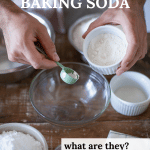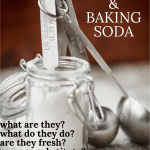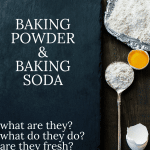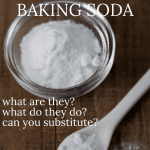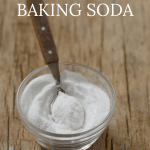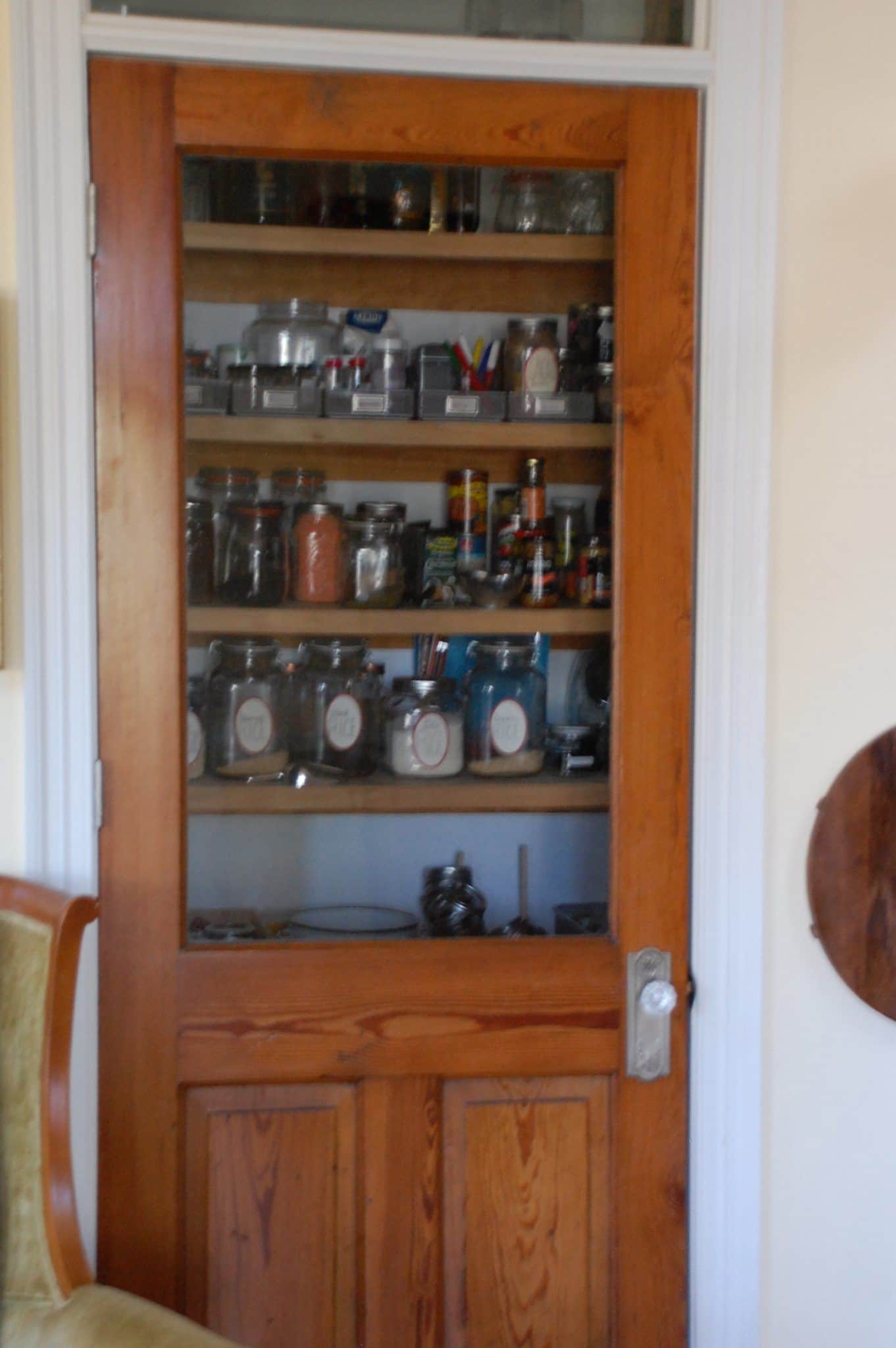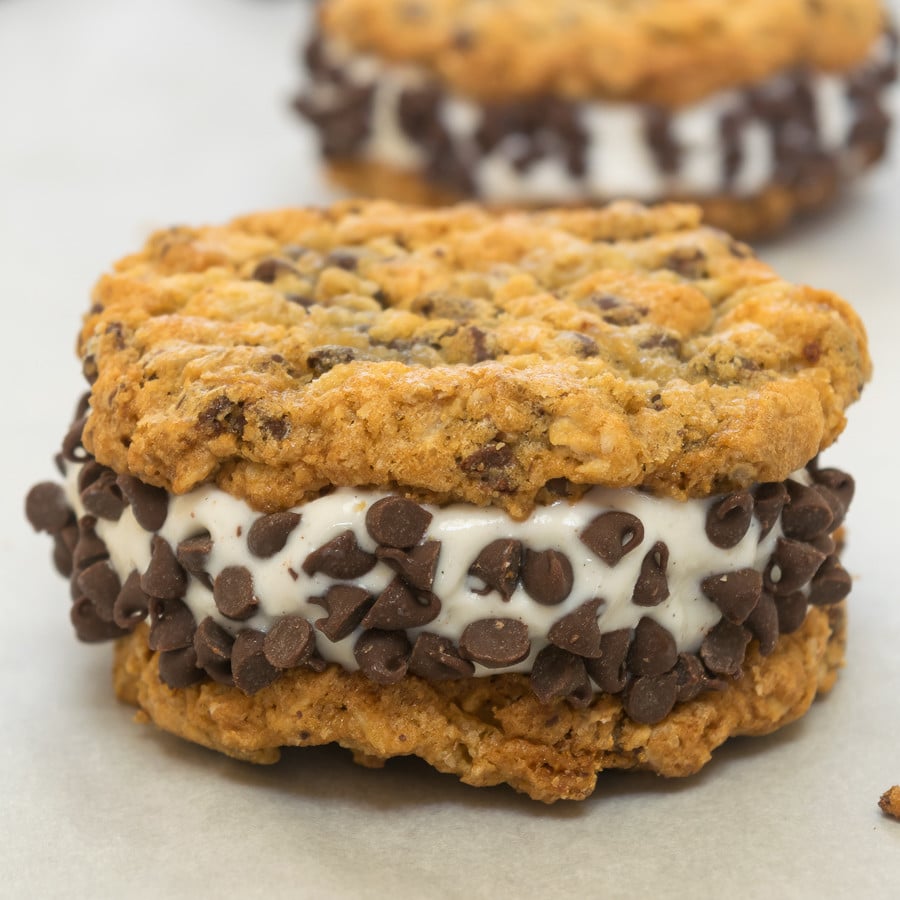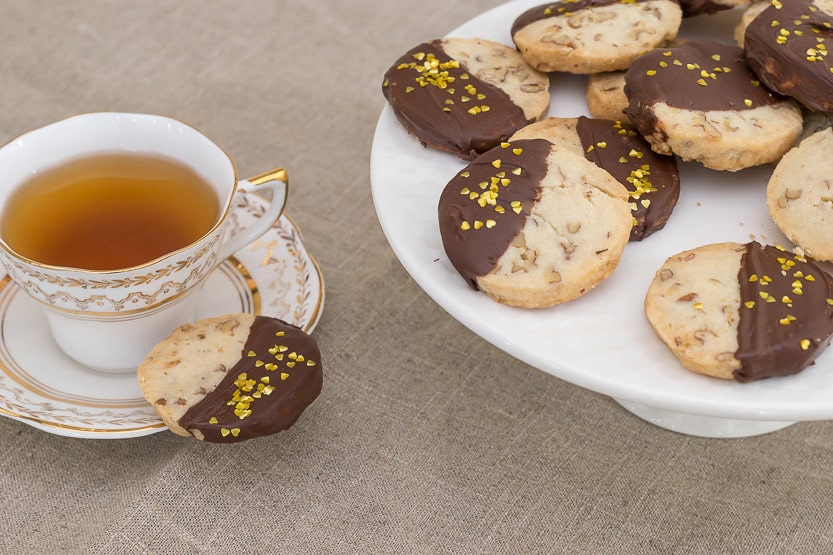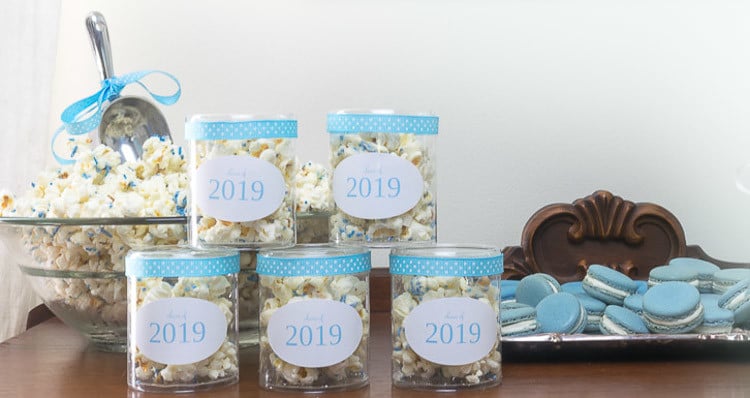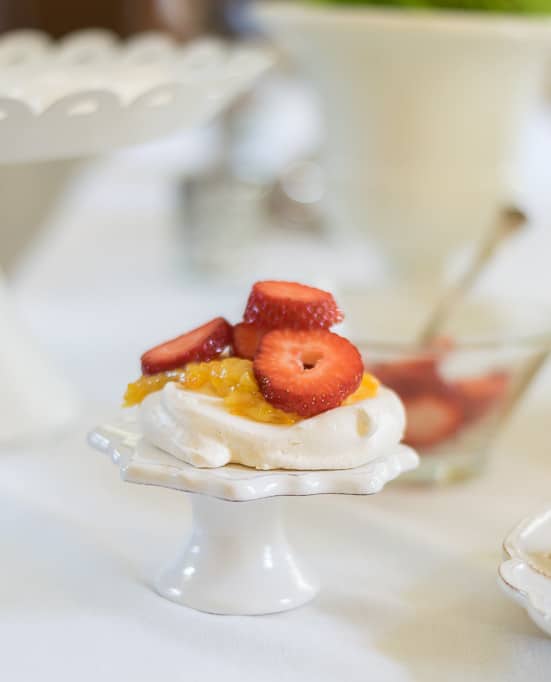Baking Soda and Baking Powder
Baking soda and baking powder are important chemical leaveners when baking. They serve the same purpose as organic leaveners, like yeast. What’s the difference between the two? How do they work? Can you substitute them? How do you know if they are fresh?
If you do any baking at all, you are familiar with baking soda and baking powder. But what are they, and how do they work? This was a fun and interesting dive into these two essential baking ingredients.
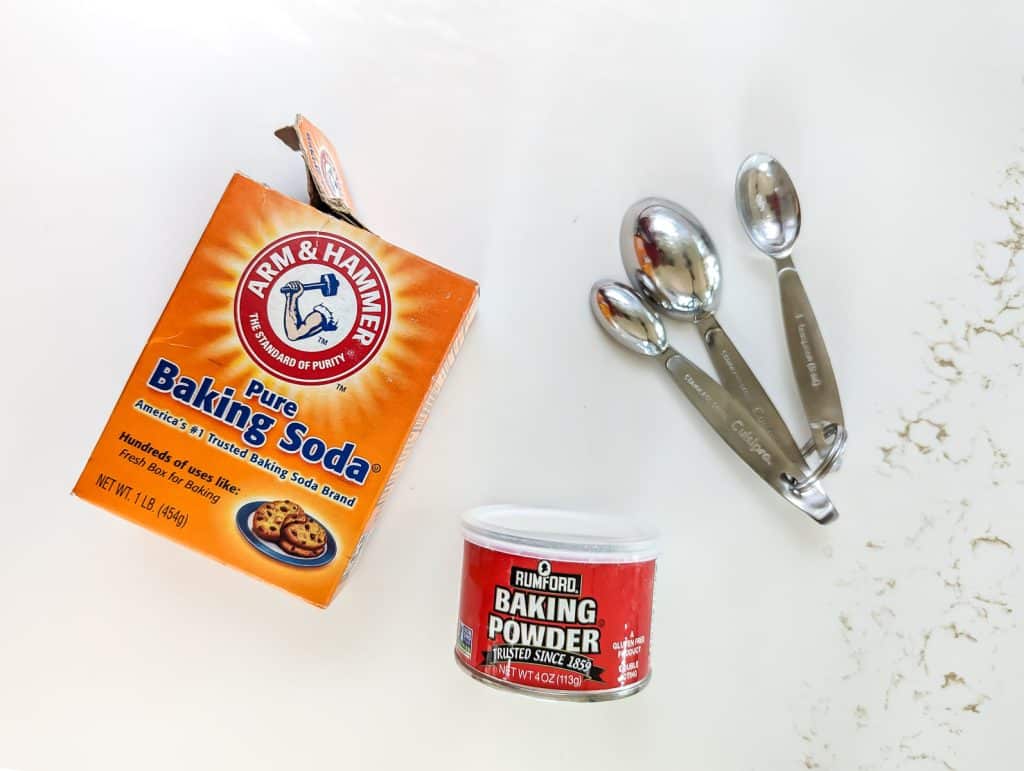
Table of Contents
all about baking soda
what is baking soda?
Baking soda is 100% pure sodium bicarbonate. In fact, it is also commonly known as bicarbonate of soda, bicarb soda, or sodium bicarbonate.
how baking soda works
When baking soda, an alkaline or base, is moistened and heated, it will release carbon dioxide. When it is moistened, heated, and combined with an acid, either liquid or dry, it creates twice as much carbon dioxide. That carbon dioxide is what creates the airy lightness and volume in your cakes, muffins, cupcakes, etc.
The carbon dioxide creation is immediate when the baking soda meets a liquid acid, so bake the batter immediately. Some of the common liquid acids are buttermilk, apples, maple syrup, honey, molasses, sour cream, citrus juice, or vinegar. If not, the carbon dioxide bubbles will eventually deflate, and you’ll lose the benefit of all the little bubbles.

Once you get your batter in the oven, more carbon dioxide gas is formed as the reaction between the baking soda and acid is accelerated. The carbon dioxide filters through the batter even more and expands the air that is trapped inside from the creaming of your ingredients. This causes your baked goods to continue to rise. Additionally, as the gases form and expand, the cell walls in your baked goods will thin, resulting in a more tender treat.
At the end of baking, the interaction with the acid should have depleted the baking soda. The last thing you want is leftover baking soda in your baked goods; it is a nasty taste to bite into. There is a necessary balance between the two (acid and base).
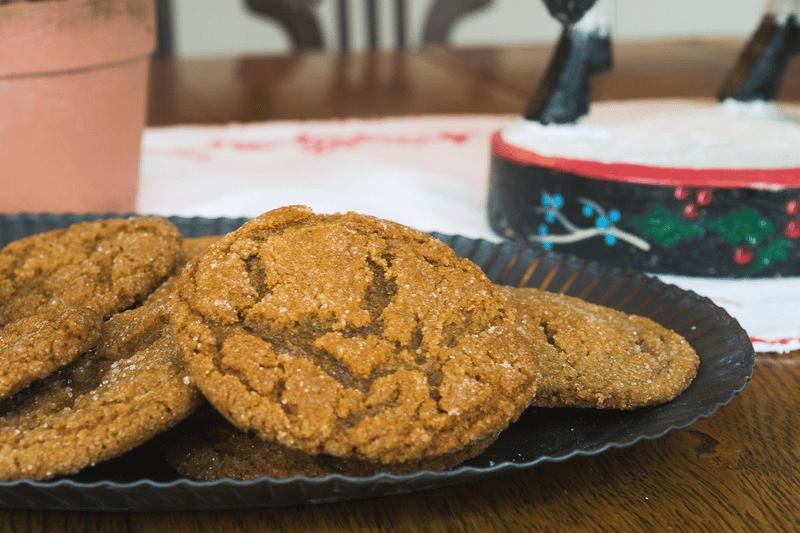
When baking soda is used in making cookies, it is typically with a dry acid. Some of these dry acids are cocoa powder, cream of tartar, brown sugar, and coffee. With these dry acids, the reaction and formation of carbon dioxide don’t happen until the fat (typically butter) melts in the oven and introduces the two elements. As such, you can refrigerate these batters before baking.
Many cookie recipes include baking soda but not so much for the lofty carbon dioxide creation. This leads us to the second job of baking soda. Baking soda also increases pH levels while reducing gluten. This creates browner, less chewy, and more tender baked goods. Browning occurs better in alkaline batters. Additionally, this increase in pH level slows protein formation, which gives the dough more time to set before the eggs (protein) are set. This results in a more evenly baked cookie.
substituting baking soda
Truthfully, you can’t substitute baking soda; it is sodium bicarbonate.
all about baking powder

what is baking powder?
Baking powder combines sodium bicarbonate and powdered acid (like cream of tartar). Since the powdered acid is included, all it needs is moisture and heat added to activate it.
how baking powder works
Baking powder is typically used in recipes that don’t call for an added acidic ingredient like baking soda does. All baking powder needs to activate is moisture and heat.
The baking powder creates the same volume, lightness, and tenderness as baking soda but has one added benefit. Most baking powders available today are ‘double-acting’, Double-acting baking powders contain two types of acid. The first is cream of tartar, which reacts and creates carbon dioxide, and therefore the air bubbles and lift when it gets wet. The second acid is sodium aluminum sulfate, which creates lifting gasses when it is heated above 140° F.
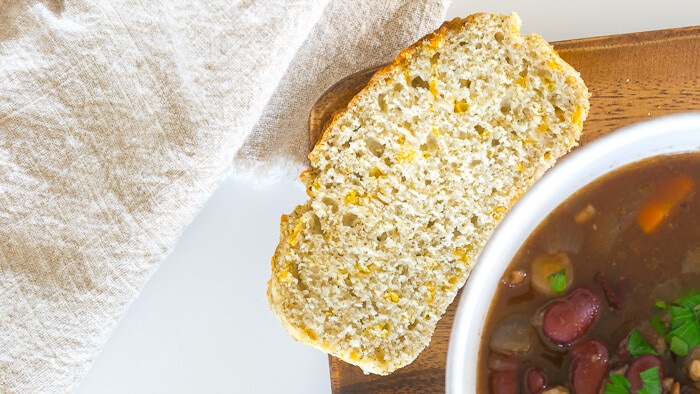
If you refrigerate the batter with baking powder, you might lose some of the life from the first carbon dioxide lift, but you will benefit from the second lift in the refrigerator. The less time you refrigerate the batter, the better. I typically only refrigerate the batter overnight for baking in the morning. And denser batter, like that for muffins, stays stable better than thin batter, like that for pancakes.
I have successfully refrigerated this donut hole recipe batter. Not only do I only refrigerate overnight, but it is a dense batter.
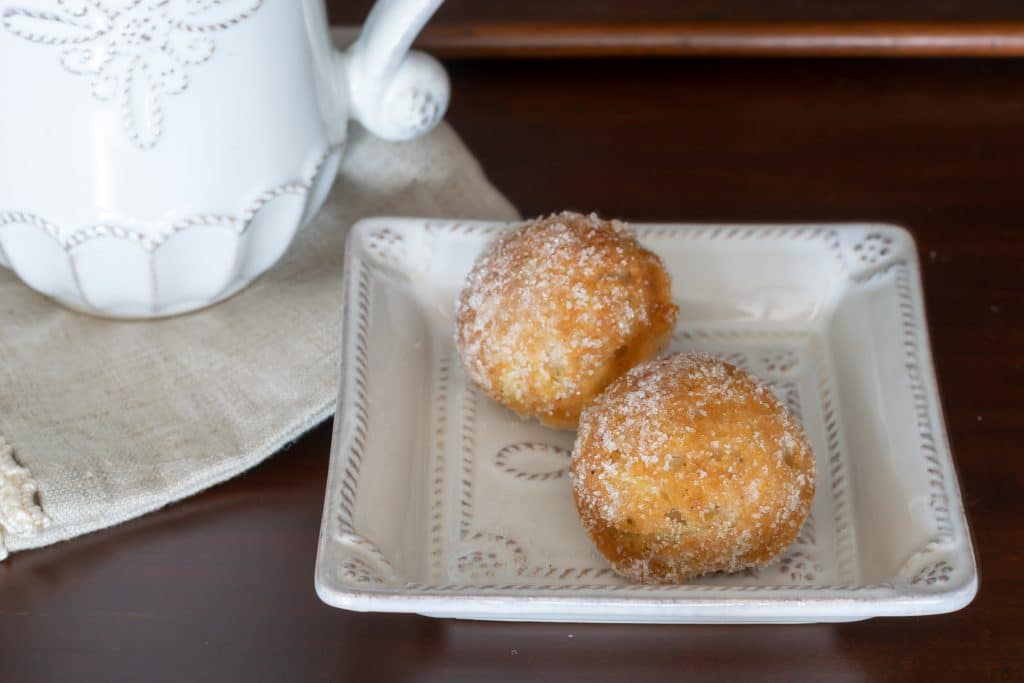
substituting baking powder
You could create ‘single acting’ baking powder by mixing together 2 tablespoons of cream of tartar, 1 tablespoon of corn starch, and 1 tablespoon of baking soda. Once again, this substitution doesn’t contain the sodium aluminum sulfate required for the second lift.
some recipes call for both baking powder and baking soda
At the end of the day, you want just enough of the acid in your recipe to balance the base (sodium bicarbonate) and create the airy lift and browning of your baked goods. When a recipe calls for both baking powder and baking soda, that indicates that the recipe has enough sodium bicarbonate in it to neutralize the acid but not enough to result in the desired lift with just one of the leaveners. Adding a wee bit of baking powder or baking soda will help get that extra lift.
are they fresh enough for baking?
Heat and humidity negatively impact the shelf life of both baking powder and baking soda, which should be about 1 year. Because these essential baking ingredients are relatively inexpensive, I always pick up fresh box/can every year before I start baking for the holidays.
But you can test the freshness at home if you are in doubt.
For baking powder, as we learned above, you should see a bubbly, gassy reaction if you add baking powder to water.

As it relates to baking soda, we learned that you need acid for it to react. So, introducing it to vinegar or lemon juice will let you see if there is a reaction and if it is still good.
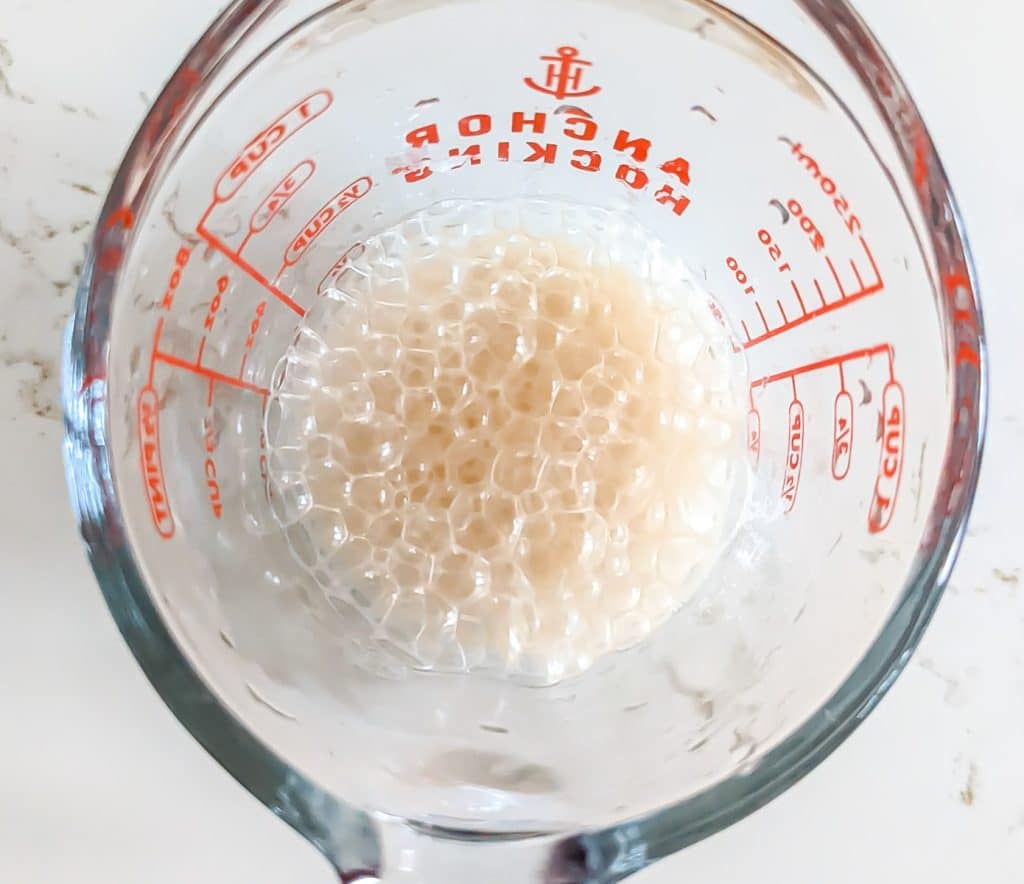
in a nutshell
- Baking soda and baking powders are both leaveners. Leaveners are substances that cause the dough to expand by releasing gas once mixed with liquid, acid, and/or heat. Leaveners give baked goods optimal volume, texture, and crumb.
- Baking soda will leaven a recipe without an acid, but it won’t be much. It really needs an acid in the recipe for the necessary oomph!
- Baking powder has both acid and base in it. Most baking powders are double-acting, meaning they will start a reaction as soon as it meets liquid AND when the batter heats above 140°.
- Too much of either baking soda or baking powder will leave a metallic, salty taste in your baked goods.
- Heat and humidity degrade both baking powder and baking soda. It is a good idea to date your products and test them after 6 months or just buy new boxes/containers.
- Batters that only contain baking soda need to be baked immediately after mixing as the carbon dioxide has already begun.
- Batters with baking powder will get an extra lift from the heat, so can be refrigerated for short periods of time. This holds for dense batters, like muffins, but not thin batters, like pancake batter. The denser the batter, the better it will hold in a baking delay.
Bookmark this page or pin the following image to return to this deep dive on baking soda and baking powder in the future.
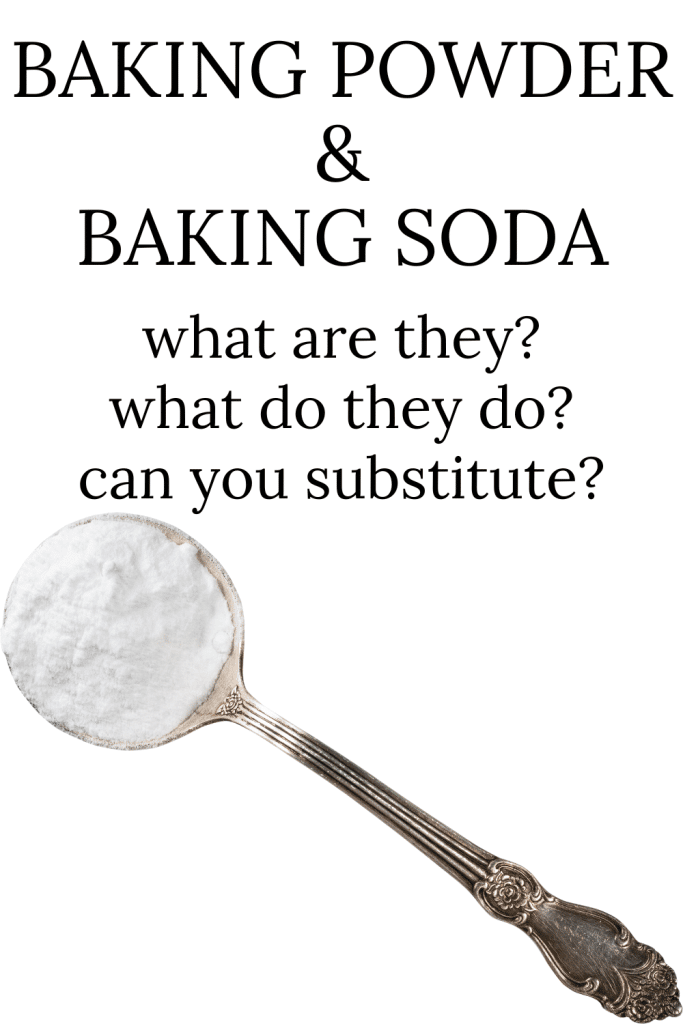
Thanks so much for spending a few minutes of your busy day with me!
To ensure you don’t miss future content, pop your email in the pale green box on the right or click here. I usually send one email weekly, so I won’t inundate your inbox. I’m sensitive to an overflowing email inbox!
We will only use your email address to send you emails, no more than 1-2 weekly. In addition, you will have access to my growing library of knit & crochet patterns and other printables. Check back often as this library will continue to grow. You can unsubscribe anytime by emailing me or clicking on the “unsubscribe” link at the bottom of all emails.
And you can access many of the products I refer to on my Nourish and Nestle Amazon Page. You can access it here.
So, if you’d like to participate in the ‘subscriber benefit’ action, simply subscribe to Nourish and Nestle here or use the form on the right sidebar. It’s slightly towards the top.
I have sent all my subscribers the link to the Subscriber Benefits Library. If you missed it or misplaced it, let me know.
Until next time…


